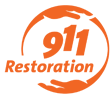As a trusted leader in the restoration industry, 911 Restoration understands that water damage is far more intricate than what initially meets the eye. The impact and restoration required can greatly vary depending on the type of water damage your property has suffered. Through our years of experience and deep expertise, we have come to recognize the value of educating property owners about the various types of water damage.
By familiarizing yourself with the various types of water damage, you’ll be better equipped to mitigate their effects and restore your property.
Classifications of Water Damage
Water damage can be classified into three broad categories based on the source and cleanliness of the water.
Category 1: Clean Water
When water damage originates from a clean water source like a leaky faucet, broken pipe, or malfunctioning appliance, it falls under the category of clean water damage. This type of damage, although less harmful due to the absence of contaminants, can still wreak havoc on your property if not addressed promptly.
Navigating Clean Water Damage: An Insightful Guide
The term ‘clean water damage’ might appear contradictory, but in the realm of water damage restoration, it’s a vital concept that homeowners should understand. When water damage comes from a clean water source such as a leaky faucet, a broken pipe, or a malfunctioning appliance, we classify it as clean water damage. Despite its relatively harmless nature due to the absence of harmful contaminants, clean water damage can still pose a significant threat to your property if neglected.
Identifying the Sources of Clean Water Damage
Understanding the common sources of clean water damage can help you better respond to such situations, potentially minimizing the extent of the damage.
When faced with clean water damage, it is important to respond promptly to minimize the extent of the damage. Turning off the water supply, if possible, can help prevent further water flow. It is advisable to contact our professionals specializing in water damage restoration to assess the situation, extract the water, thoroughly dry the affected areas, and repair any structural damage.
Leaky Faucets and Broken Pipes
Water supply lines for faucets or any pipe carrying clean water can become the unexpected culprits of water damage in your home. Although the water from these sources is initially clean, it can cause substantial damage by soaking into furniture, rugs, flooring, and walls, leading to deterioration and potential mold growth if not treated promptly.
Malfunctioning Appliances
Another common source of clean water damage is malfunctioning appliances, such as a burst water heater, an overflowing washing machine, or a leaking refrigerator. When these appliances malfunction, they can release a significant amount of water, leading to immediate and potentially widespread water damage.
The Impact of Clean Water Damage
While clean water does not carry the same health risks as grey or black water, it can still cause serious problems for homeowners. To mitigate the problems associated with clean water damage, it is essential to call our professionals specializing in water damage restoration. Because our experts have the knowledge, experience, and equipment to properly extract the water, thoroughly dry the affected areas, and mitigate the potential for mold growth. They can also assess the extent of structural damage and perform necessary repairs to restore the property.
Structural Damage
Clean water can cause significant structural damage to your home. Drywall may warp or disintegrate, wooden beams and floors can rot, and prolonged exposure can even affect the integrity of your home’s foundation.
We prioritize a prompt response because we recognize that acting swiftly can minimize the long-term consequences of clean water damage. Our professionals are trained to assess the extent of the damage and implement the appropriate restoration techniques tailored to your specific situation. With our comprehensive approach, we aim to preserve the integrity of your home’s structure and safeguard its long-term stability.
Damage to Personal Property
Furniture, electronics, carpets, and personal items can all be damaged when exposed to water. This damage can be particularly severe if the water leak goes unnoticed for a period of time.
At 911 Restoration, we understand the value of your belongings and the emotional attachment you may have to them. Our skilled technicians are trained to handle water damage situations with care and precision. We utilize advanced techniques and equipment to extract water, dry affected areas, and restore your furniture, electronics, carpets, and personal items to the best possible condition.
Potential for Mold Growth
Any type of water damage, including clean water damage, creates the ideal conditions for mold growth if not promptly and properly addressed. Left unchecked, mold can lead to poor indoor air quality and cause health issues for the home’s occupants.
By taking swift action and relying on professional expertise, you can minimize the risk of mold growth and maintain a healthy indoor environment for you and your loved ones. Our team is dedicated to providing comprehensive water damage restoration services that address not only the visible damage but also the potential for mold growth, ensuring your home remains a safe and healthy place to live.
Addressing Clean Water Damage
As soon as clean water damage is detected, immediate action is crucial. This includes stopping the water flow, removing as much water as possible, and drying out the affected area. It’s also important to assess the damage to personal property and building materials. While some items might be salvaged through drying and cleaning, others may need to be replaced.
Although it’s possible to manage some instances of clean water damage on your own, it’s often beneficial to engage professional water damage restoration services. Experts can accurately assess the extent of the damage, ensure that all moisture is removed, and handle any mold remediation if necessary.
Despite its benign-sounding name, clean water damage is a serious issue that can lead to substantial property damage if not promptly addressed. Being aware of the potential sources and impacts of clean water damage can better prepare homeowners to respond quickly and effectively when faced with such situations.
Category 2: Grey Water
The term ‘grey water’ refers to wastewater that is not contaminated with fecal matter. As such, it is generally safer to handle than black water, which is highly contaminated. However, this does not imply that grey water is entirely safe or that it cannot cause substantial damage. Grey water may contain varying degrees of contamination and comes from sources like dishwashers, washing machines, or toilet overflows that contain urine but no feces.
Identifying the Sources of Grey Water
Identifying the sources of grey water is crucial in understanding potential risks and taking appropriate measures for water management. Grey water is defined as wastewater generated from sources other than toilets, such as sinks, showers, and laundry. Being aware of these sources helps to recognize potential contamination and implement effective water conservation and recycling practices.
Dishwashers and Washing Machines
Grey water frequently originates from household appliances like dishwashers and washing machines. These appliances use soaps and detergents, which end up in the wastewater. Although these substances are not as hazardous as raw sewage, they can still contaminate your property and cause health issues if they come into contact with people or pets.
Toilet Overflows
Toilet overflows that do not contain feces can also lead to grey water damage. For instance, if the toilet overflows due to a clog and the water only contains urine, it’s considered grey water. Although not as dangerous as fecal matter, urine can still contain bacteria and other microorganisms.
Understanding the Contamination in Grey Water
Grey water contamination is often biological, resulting from the presence of microorganisms from food waste, human waste (urine but no feces), and soaps or detergents. These contaminants can lead to discomfort or illness if humans or pets ingest them or if they come into contact with open wounds. Moreover, grey water can damage your property, staining surfaces and causing unpleasant odors.
The Risk of Grey Water Progressing to Black Water
It’s crucial to address grey water damage promptly because, if left untreated, grey water can degrade into black water. This transition happens as biological materials in the grey water break down over time, creating an environment conducive to bacterial and mold growth. In as little as 48 hours, untreated grey water can become as dangerous as black water, posing severe health risks and complicating the restoration process.
Addressing Grey Water Damage
Given the potential risks, it’s essential to handle grey water damage promptly and effectively. The process usually involves removing the grey water, thoroughly drying the affected area, cleaning and disinfecting to kill any microorganisms, and finally repairing or replacing damaged materials. It’s always recommended to seek professional help to ensure that the grey water damage is completely and safely addressed, mitigating the risk of further damage or contamination.
While grey water is not as dangerous as black water, it still poses a risk to health and property and requires immediate attention. By understanding the nature of greywater, homeowners can better respond to incidents of water damage, potentially minimizing the impact and cost of restoration.
Category 3: Black Water
Recognizing the classification of water damage helps you understand the urgency and the appropriate steps to take. When confronted with black water damage, it is crucial to prioritize your safety and that of others. Evacuate the area if necessary and avoid contact with the water to minimize exposure to harmful substances.
Black water restoration requires specialized knowledge, equipment, and expertise. It is a complex process that necessitates thorough cleaning, disinfection, and possible removal and replacement of contaminated structures and materials. Only trained professionals should handle blackwater restoration to ensure a safe and effective restoration process.
After all, black water is the most dangerous type of water damage due to its high level of contamination. Understanding the classifications of water damage allows you to comprehend the urgency and the appropriate response required. In cases of black water damage, immediate attention and professional assistance are essential to mitigate health risks and prevent further damage to the property.
Read more about water damage: 5 Ways to Organize Your Basement to Prevent Flood Damage


